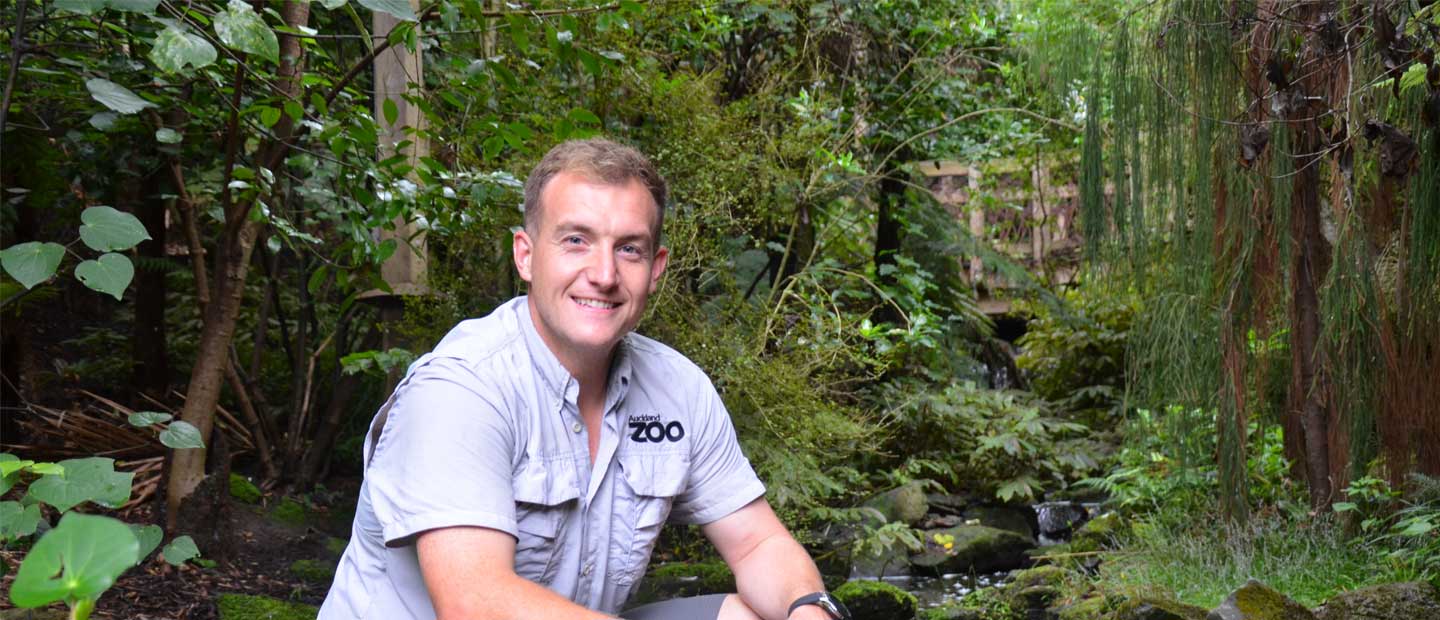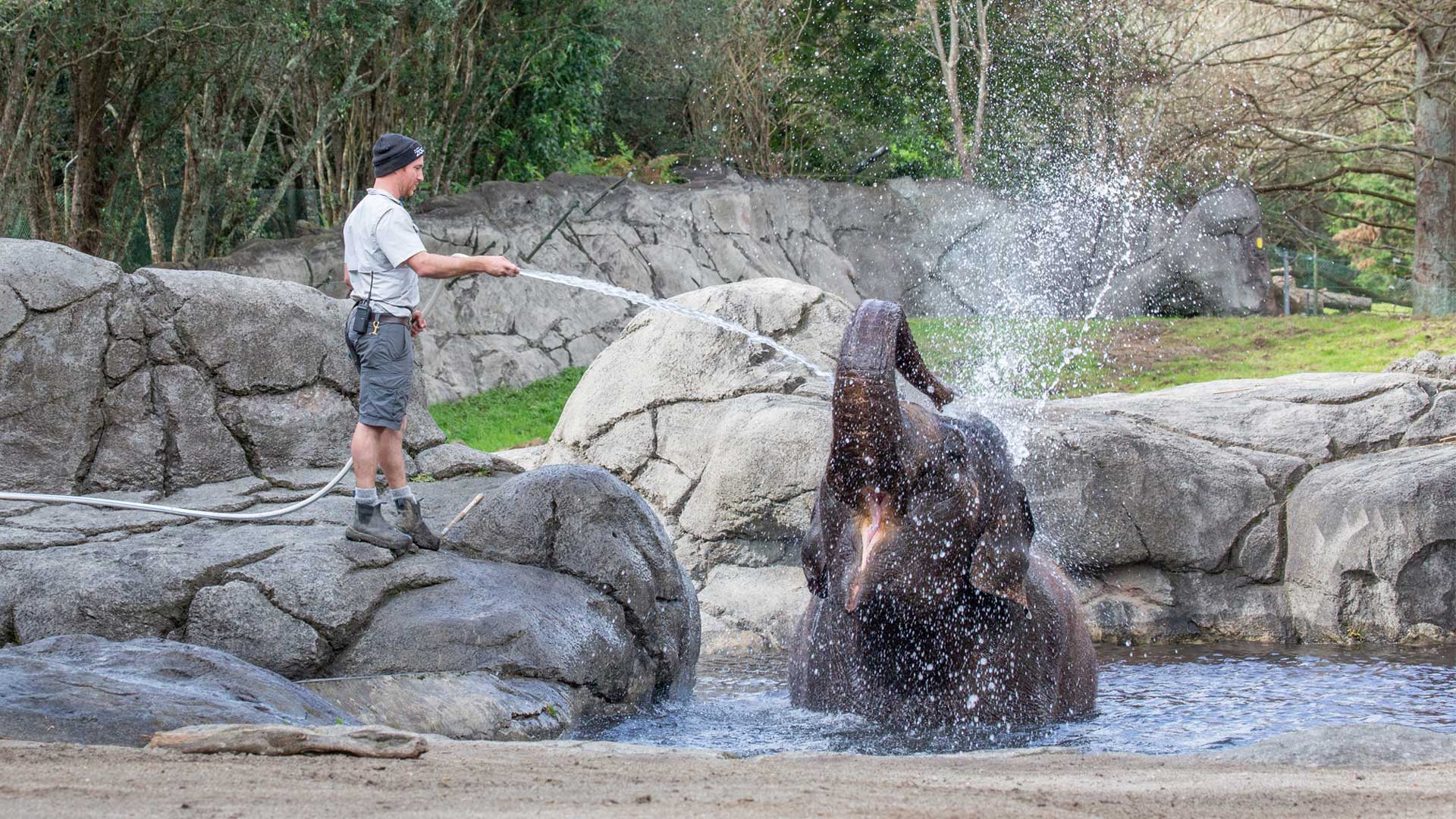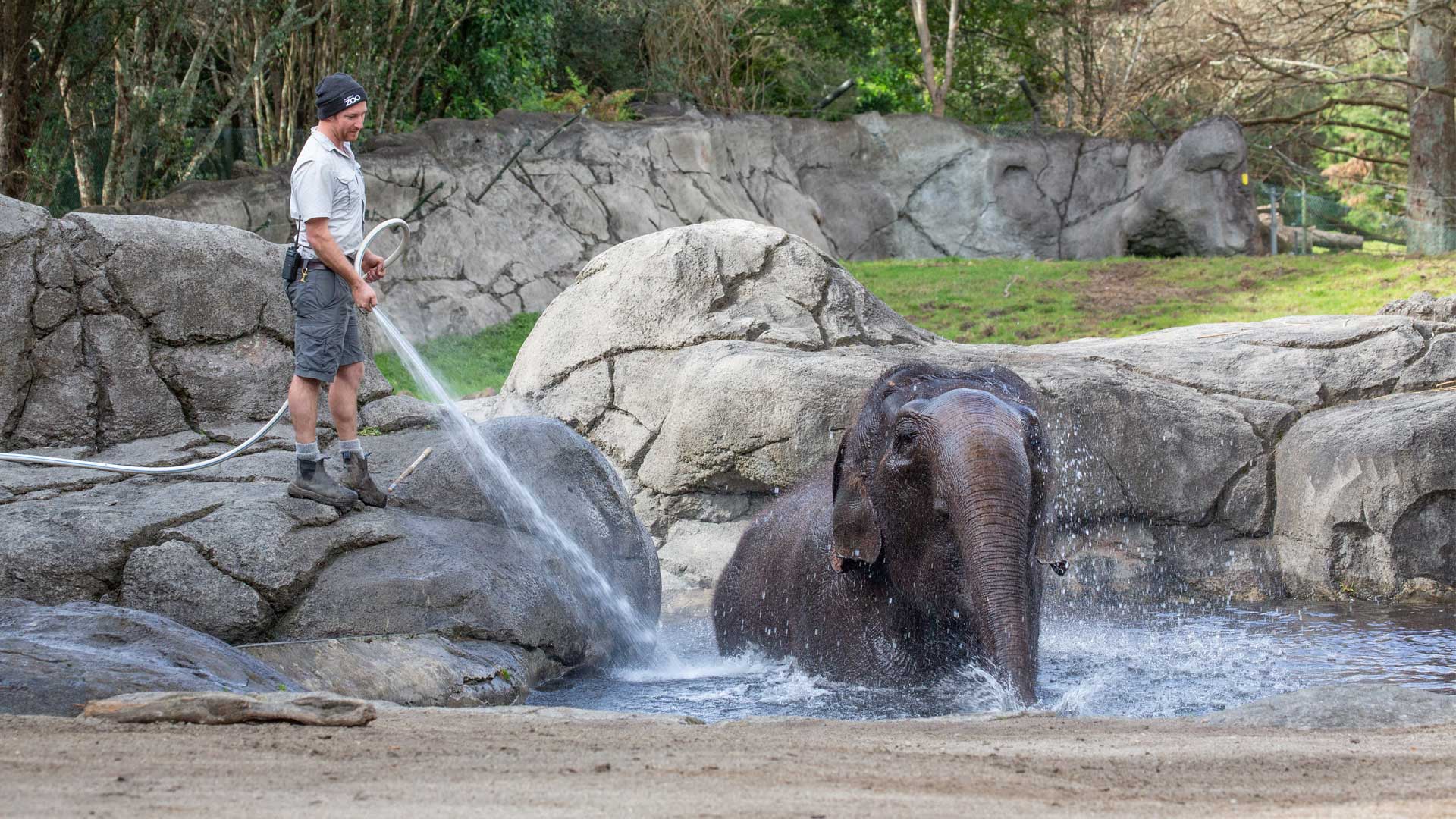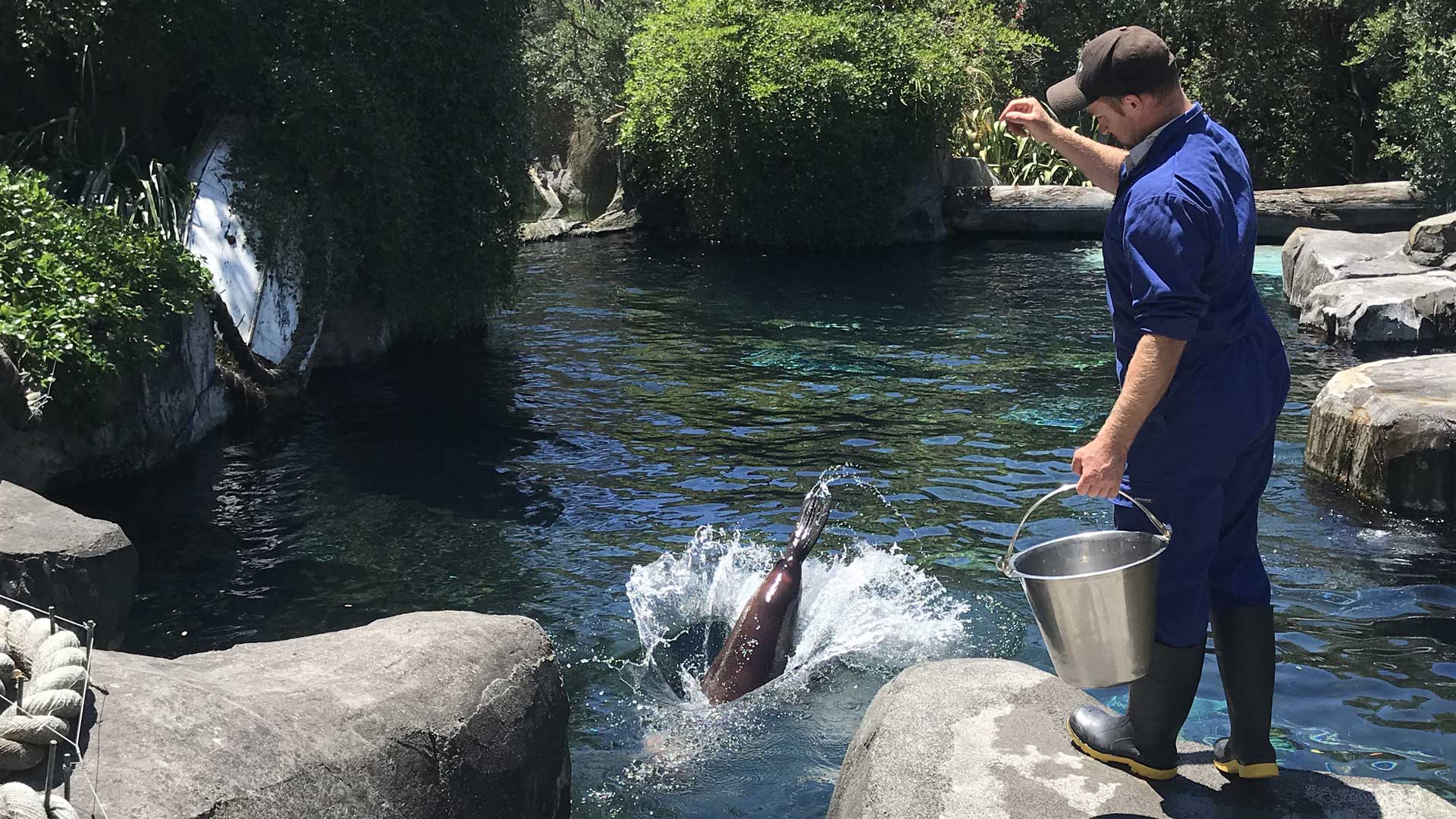Where does all Auckland Zoo’s water come from, and how is it used?
Our water comes from potable mains (town supply), harvested rainwater, and Western Springs lake, a natural spring. Thanks to Auckland Council’s Wai Ora-Healthy Waterways, we to have consent to draw and recycle water from this next-door spring, which we value immensely.
It’s water from Western Springs that’s used to fill our animal moats (which themselves all have an important sediment settlement function), the swimming hole for our elephants, and to irrigate our extensive botanical gardens. This water is also used for water features like waterfalls in our giraffe paddock and within Te Wao Nui.
We use harvested rainwater for flushing toilets, animal wash-downs, and some irrigation. Potable mains water is used for some of our animal’s specialised life support systems to create unique living environments, enabling us to bring immersive underwater worlds from the seas to the heart of Auckland's city.
What is the Zoo doing to use water more efficiently and ensure water quality?
As a not-for-profit conservation organisation that’s also CarboNZero accredited, we’re always working to improve our performance. As is best practice, we monitor, track and trace all our water use, which helps us identify things like unusual spikes in use or leaks. We’ve really intensified and been improving how we monitor, and this has resulted in significantly reduced water usage.
Water quality is also a very big focus. As we’ve done for decades, we regularly test any water coming into the Zoo (e.g. from Western Springs) and treat and test all water going out to ensure water sanitation and improved water quality. To achieve this, all water leaving us that goes into Meola Creek and out into the Waitemata, is specially treated with an eco-friendly Envirolyte solution. We’re very proud that the water we’re using, and all our run-off is at a better quality when it leaves us and has no negative impacts on our environment.
All new buildings, like our recently completed Administration block, have tanks so we can harvest rainwater to use for things like toilet flushing and irrigating gardens.
We also install water saving devices; simple things like adjusting toilet flow valve levels from the standard nine litres to six litres can make a big difference. It may sound a small thing, but with dozens of toilets throughout the Zoo, this helps us save hundreds of thousands of litres every year. Imagine if every household in Auckland did this, we’d be able to save our city many millions of precious litres a year!







